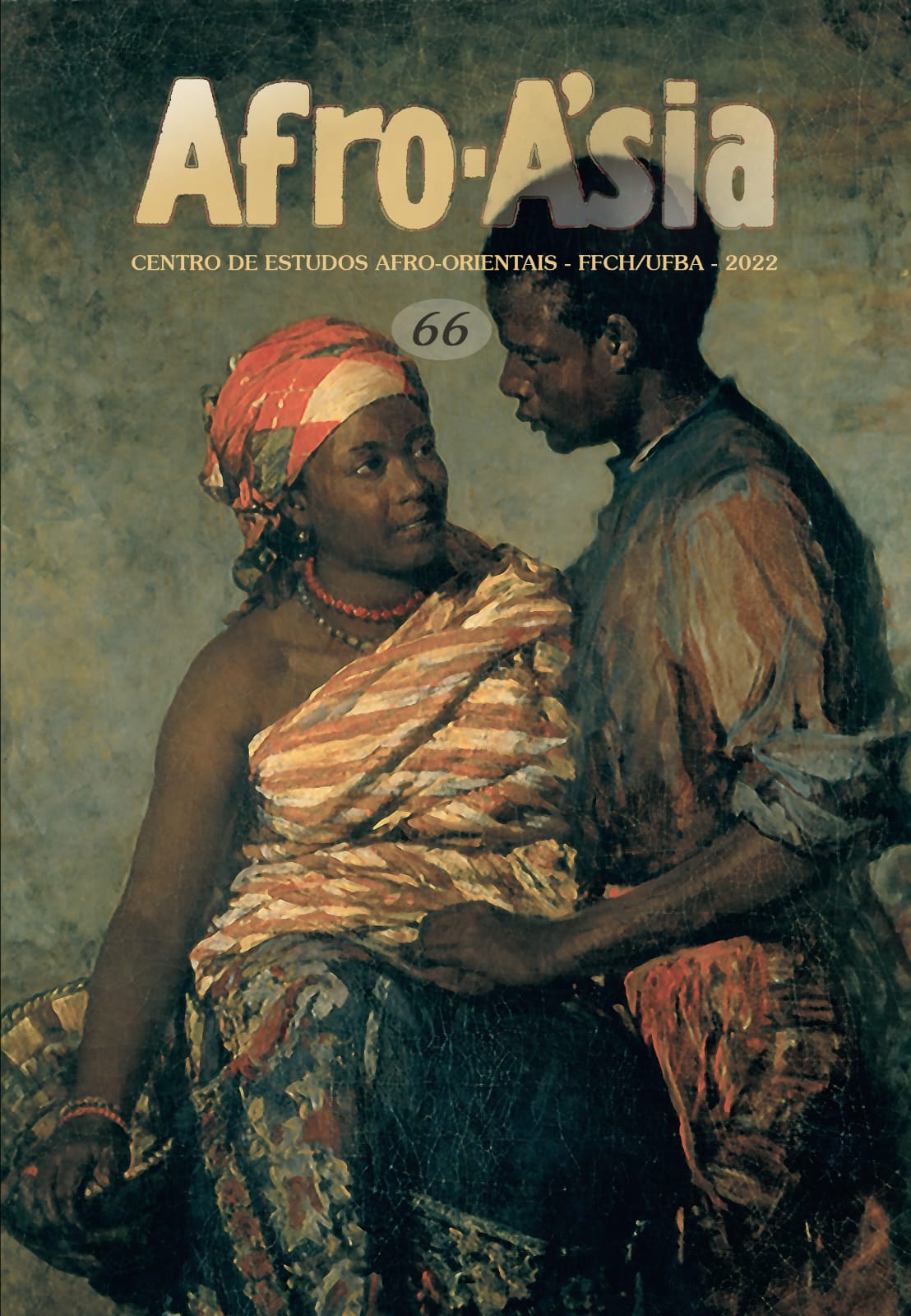The Decline and Fall of the Soga
The Political Uses of Climate and Stars in Nihon Shoki
DOI:
https://doi.org/10.9771/aa.v0i66.49359Keywords:
Japanese history, Asuka period, Nara period, Chinese cosmology, Nihon ShokiAbstract
Analyzing the Soga’s fall as described in the Nihon Shoki (720 CE), this article explores how the chronicle’s writer sutilized climatic, astronomical, and other natural phenomena in justifying the coup d’etat of 645 CE, relating it to the Soga’s historical trajectory, the weight of the Chinese cosmological conceptions
in Japan at that time, and the context in which the Nihon Shoki was written. The paper also examines the role of omens, comparing their incidence in the three preceding and the three succeeding reigns to the core of the rise and fall of the Soga. The paper concludes with an exegetic analysis of these episodes, seeking arguments that corroborate the hypotheses presented.
Downloads
References
ASTON, W. G. Nihongi: Chronicles of Japan from the Earliest Times to A.D. 697. London: Allen & Unwin, 1956.
BARNES, Gina L. State Formation in Japan: Emergence of a 4th-Century Ruling Elite. Abingdon: Routledge, 2007.
BARY, Wm. Theodore de et al (Comp.). Sources of Japanese Tradition, Volume One: From Earliest Times to 1600. New York: Columbia University Press, 2001.
BROWN, Delmer. The Yamato kingdom. In: The Cambridge History of Japan, Volume 1: Ancient Japan. New York: Cambridge University Press, 1993. p. 108-162.
CHING, Julia. Mysticism and Kingship in China: The Heart of Chinese Wisdon. Cambridge: Cambridge University Press, 1997.
CRANSTON, Edwin A. Asuka and Nara culture: literacy, literature, and music. In: BROWN, Delmer (Ed.). The Cambridge History of Japan Volume 1: Ancient Japan. New York: Cambridge University Press, 1993. p. 453-503.
INOUE, Mitsusada. The century of reform. In: BROWN, Delmer (ed.). The Cambridge History of Japan, Volume 1: Ancient Japan. New York: Cambridge University Press, 1993. p. 163-220.
KIRKLAND, Russell. The Sun and the Throne: The Origins of the Royal Descent Myth in Ancient Japan. Numen, [S.L], v. 44, n. 2, p. 109-152, maio 1997, https://www.jstor.org/stable/3270296.
NAOKI, Kojiro. The Nara state. In: BROWN, Delmer (ed.). The Cambridge History of Japan Volume 1: Ancient Japan. New York: Cambridge University Press, 1993. p. 221-267.
NEEDHAM, Joseph; WANG, Ling. Science and Civilisation in China, Volume 3: Mathematics and the Sciences of the Heavens and the Earth. New York: Cambridge University Press, 1959.
OOMS, Herman. Imperial Politics and Symbolics in Ancient Japan: The Tenmu Dynasty, 650-800. Honolulu: University Of Hawai'I Press, 2009.
PANKENIER, David W. Astrology and Cosmology in Early China: Conforming Earth to Heaven. Cambridge: Cambridge University Press, 2013.
PINES, Yuri. Foundations of Confucian Thought: Intellectual Life in the Chunqiu Period, 722-553 B.C.E. Honolulu: University Of Hawai'I Press, 2002.
SINEDINO, Giorgio. Os Analectos. São Paulo: Editora Unesp, 2012.
TYLER, Royall. The Tale of Heike. New York: Viking, 2012.
Downloads
Published
How to Cite
Issue
Section
License
Copyright (c) 2023 Kauê Otávio Metzger

This work is licensed under a Creative Commons Attribution 4.0 International License.
You are entitled to freely share, adapt and use the work herein published for any legitimate purpose as long as authorship and the original source are acknowledged.




